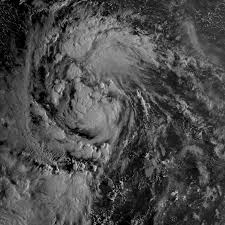
Typhoon Mangkhut hit the Philippines’ main island on September 15 killing at least 25 people.
Extensive crop damage is feared in the agricultural province of Cagayan.
Mangkhut, which packs a 550 mile rain band and strong winds, is heading towards southern China.
The storm poses a “severe threat” to Hong Kong, the territory’s observatory said, urging residents to stay on high alert.
In the Philippines, Mangkhut made landfall at Baggao, in the north-east of the main island of Luzon, at about 01:40 local time on September 15 and left some 20 hours later.
Originally a super typhoon billed as the strongest storm of 2018, Mangkhut lost some of its strength on landfall.
Five million people were in its path and more than 100,000 sheltered in temporary centers.
Typhoon Haiyan affected 11 million people in Philippines
A presidential spokesman and disaster response coordinator said almost all the deaths had been caused by landslides in the Cordillera and Nueva Vizcaya regions, adding that reports from other areas were still coming in.
One person was killed by a falling tree in the province of Ilocos Sur, he said.
Almost all buildings in the city of Tuguegarao, Cagayan’s provincial capital, sustained damage, a government official said.
The Philippines is routinely hit during the typhoon season but the strength of Manghukt evoked memories of the deadliest storm on national record – Super Typhoon Haiyan – which killed more than 7,000 five years ago.
However, preparation and evacuation procedures have been improved since then – warnings were issued, travel was restricted, schools shut and the army was put on standby in advance.
Mangkhut is still strong as it heads west toward southern China with current sustained wind speeds of 90mph but fears it will re-strengthen into a super typhoon have receded.
https://www.youtube.com/watch?v=8FMUFUUqckw
